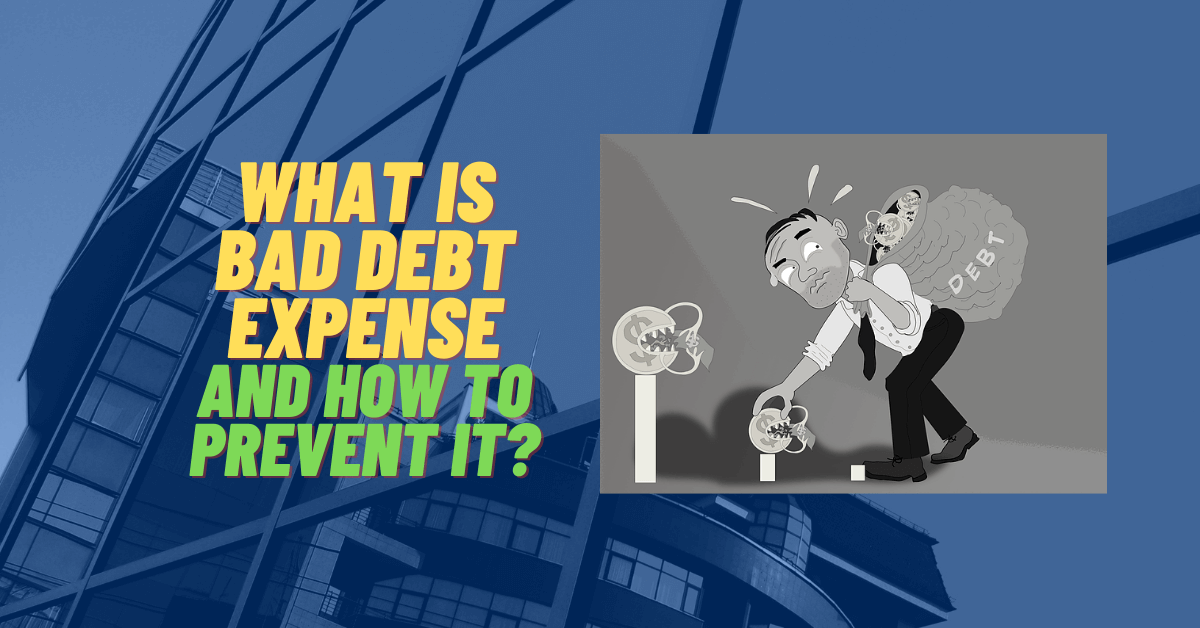What happens when you run into a situation where a customer cannot pay the money they owe you? We certainly hope that you don’t. But just in case you do, you’ve got yourself a bad debt that needs to be dealt with. Some people may be familiar with bad debt expense, while some are completely oblivious to it. In this article, we’re going to cater to both. We’re going to show you everything there is to know about bad debt expenses. These are referred to as debt because they present a negative void in your net income since you can’t make up for the lost amount.
Table of Contents
ToggleWhat is Bad Debt Expense?
First, let’s define what lousy debt expense is and why it impacts you and your business. Bad debt expense is accounts receivable that you cannot collect because your customer or customers failed to fulfill their financial statements. There are two methods of calculating expense bad debt: the allowance method and the direct write-off method.
Bad debt expense is losing money because the customer does not pay immediately for the goods sent or services rendered. It’s a record that is reflected in a business owner’s financial statements as a credit loss.
Finding Bad Debt Expense
Businesses that offer products and services on credit are always at risk of bad customers who fail to pay their bills. Bad debt expenses come from these unpaid bills. After multiple failed attempts at collection, the business will then consider being non-collectible. Thus, it falls under lousy debt expense.
The option to write off an unpaid customer invoice will depend on the owner’s decision. However, if the customer is purposely avoiding calls, and their outstanding balance has gone unpaid for over 90 days, it will become mandatory to write off the invoice as bad debts.
Unpaid invoices hurt you in the long run. That’s why you need to write it off to give you a better view of your business’s financial statements. By writing off debt, you can avoid overstating your revenue, assets, and earnings.
If you have a good number of customers who have fallen in the bad debt expense category, it’s also best to flag them from ever transacting from you again. That way, you can avoid repeating your mistakes by putting your trust in shady and unreliable customers.
Calculating Bad Debt
To calculate bad debt expenses, you need to choose between wrote-off or allowance for doubtful accounts method. To know how to calculate bad debts, let’s get to know more about them.
Direct Write-Off Method
The direct write-off method involves the situation where the invoice amount is charged directly to bad debt expense and removed from the account receivable. Once it becomes clear that a customer invoice will not be paid, the invoice amount will be considered a bad debt expense. Because of this, it will then be removed from the account receivable. The account containing the bad debt expense will then be debited, while the account with accounts receivable will be credited.
Since it’s the direct write-off method, there will be no allowance account involved. The reason why there are two ways to calculate bad debt expense is that there are certain downsides to each one that needs to be addressed. For direct write-off, it fails to keep the generally accepted accounting principles (GAAP), as well as the principles, use in accrual accounting.
In this rule, an expense must be acknowledged during a transaction instead of when payment is made. That also means while it’s one of the two methods for calculating bad debt, it’s not the most accurate.
Allowance Method
The allowance method uses anticipation to determine bad debt even before they occur. In this method, an allowance is established for doubtful accounts based on an estimated number. In other words, this method gives an allowance for doubtful accounts. This figure is the amount of money that a business anticipates to lose every year – otherwise known as a contra asset.
When listed on the balance sheet, the account containing the contra-asset reduces the account containing loan receivable. That means when both accounts record sales transactions; it also records a related amount of bad debt expense. The allowance for doubtful accounts will be the same.
This record is then considered a debit to the bad debt expense account and credit (allowance) for doubtful accounts. The unpaid accounts are then reduced to zero at the end of the year by depleting the amount in the allowance account.
Among the two, the allowance for doubtful accounts method is more compelling and accurate. It offers a cushion – an estimate – that will enable the business to predict how much it loses instead of waiting for the actual amount.
Methods for Estimating Bad Debt
According to the GAAP, there are two ways to estimate bad debt:
- Percentage of Sales – uses a percentage of the total sales for a particular period.
- Percentage of Accounts Receivable – uses a percentage of accounts receivable method.
How to Prevent Bad Debt Expense
Having bad debt can significantly negatively impact your business. It will hurt your business in terms of net income and long-term success. That’s why as early as now, you need to find a way to fix this issue. The longer it lingers, the worse it will become.
Fortunately, there are different ways of preventing bad debt. Here are three of the best methods:
Do Some Sleuthing
Whether you’re doing business with individual people or another business, it’s essential to know the financial health of your clients. You can partner with a credit reporting company to provide you with that information. It should also be mandatory and part of your onboarding strategy. Always remember that knowing who you’re doing business with is crucial. Do some research, speak with past suppliers or industry colleagues. Look at other stores that the customer has also purchased from. By doing all this, you can have a better picture of what you’re going to deal with later.
Add Upfront Payments to Your Business Policy
For your small business to thrive, you need to start taking partial upfront payments. You can start low, then take it up a notch by presenting a payment schedule on engagement. For example, you can start with 25% as upfront payment, then another 25% after hitting a key milestone in the projects. The remaining 50% will then be compensated upon completion.
By having upfront payment, you can reduce the amount that’s owed to you over time. That way, you won’t succumb to bad debt expenses as you’ve already got the majority of the costs. Sure, you’ll still lose a percentage of the profit. But at least it isn’t totally zero.
Offer Incentives
One way to entice customers to pay early or on time is to implement incentives. Within your payment terms, you should include a line that talks about incentivizing customers that pay early or on time. To ensure timely payments, you can offer small discounts.
Structure your payment terms to encourage on-time payments. It’s a far better approach than issuing penalties and late fees for overdue invoices. Plus, discounts also have a psychological effect on customers looking to save as much money as possible. Thus, they’ll be enticed with the discount.
Prevent Bad Debt with Recurring Billing
One of the main reasons for bad debt expense is that your customer failed to fulfill their financial statements. Not receiving proper payment can derail operations and affect your business negatively. Fortunately, you can prevent delayed or nonpayment – and bad debt expense – with recurring billing.
Recurring billing is a way of billing your customers on a recurring basis for their purchases. You can set up recurring billing with ReliaBills to send the invoice at different intervals, such as monthly or yearly. Customers have an automated payment method available to them, and they only need to submit a purchase order number to use this service. This will allow you to automatically bill, invoice, and collect recurring payments from your customers without having to worry about late or nonpayment.
In addition, when you use recurring billing software like ReliaBills instead of the traditional invoicing process, it is easier for customers to make payments. Your customers will appreciate the benefit of not remembering their credit card information since the system saves their payment information.
They will only have to enter their payment credentials once. This helps prevent late or nonpayment, resulting in you incurring bad debt expenses by paying for your inventory twice. Once when it is initially ordered and then again after the customer fails to fulfill the payment.
Apart from preventing bad debt expense, recurring billing also offers the following benefits:
Recurring Invoices Result in Better Cash Flow
Another benefit of recurring billing that businesses can enjoy is better cash flow. When you use recurring invoices instead of traditional, manual ones (which still include a waiting period for payment), your company will experience improved cash flow. This is because fewer payments are due and more money coming in. This can help avoid the need for loans or additional investments from investors if you run into any problems.
Recurring billing helps improve your cash flow and keeps you from having to pay late fees or finance charges. If not accounted for, these can result in a more significant expense and should be avoided at all costs. With recurring invoices, the automated process will remove any human error that could lead to delayed payment – which means you are less likely to be charged late fees or finance charges.
Recurring Invoices Make It Easier for Customers
One of the recurring billing benefits that business owners may not realize is how easy it makes things for their customers. When you use recurring invoices, your customer does not have to remember to submit a purchase order every time they purchase your business. This is because recurring invoices will automatically send to them as long as the recurring billing has been set up correctly and their payment method approved.
Recurring Invoices Help Build Customer Loyalty
One of the benefits that recurring billing offers businesses is increased customer loyalty which means increased profitability! Customers like recurring billing because they do not have to remember to submit payment every month or year, which helps them save time. Since customers are happy with this arrangement and appreciate the convenience that recurring invoices offer them, it can help you build a lasting relationship with your customer base so that they keep coming back for more!
Recurring Invoices Make Invoicing & Payment Processing Easier
Recurring invoices make recurring billing easier by making the process more fluid. This is because you do not have to worry about forgetting to submit an invoice or collect payment every month, quarter, or year – recurring billing takes care of that automatically! You can also automate recurring billing by using recurring invoices from ReliaBills.
You can set up recurring billing to send your invoice at different intervals, monthly or yearly. Customers have an automated payment method available to them, and they only need to submit a purchase order number to use this service. This will allow you to automatically bill, invoice, and collect recurring payments from customers with ease.
How to Create a New Recurring Invoice Using ReliaBills
Creating a New Recurring Invoice using ReliaBills involves the following steps:
Step 1: Login to ReliaBills
- Access your ReliaBills Account using your login credentials. If you don’t have an account, sign up here.
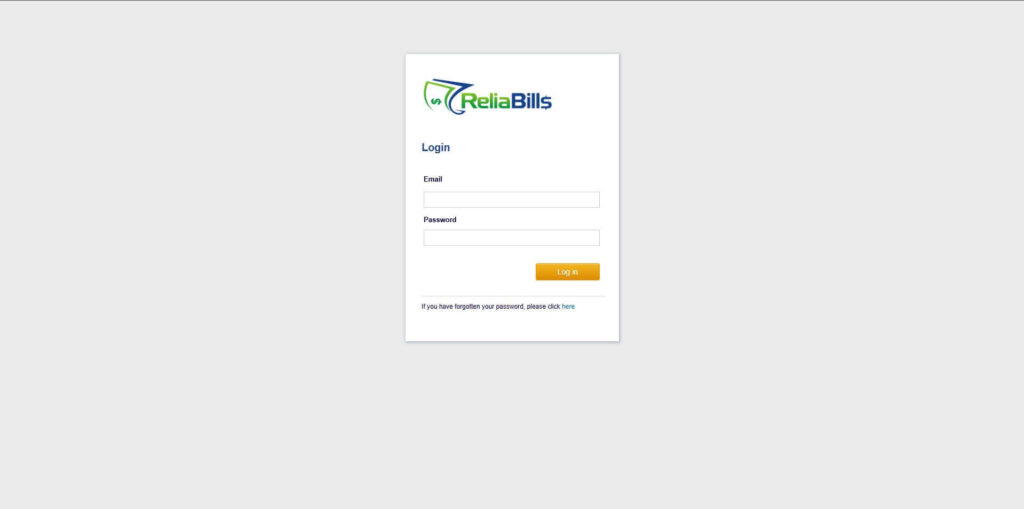
Step 2: Click on Recurring Invoices
- Navigate to the Invoices Dropdown and click on Recurring Invoices for an overview of the list of your existing customers.
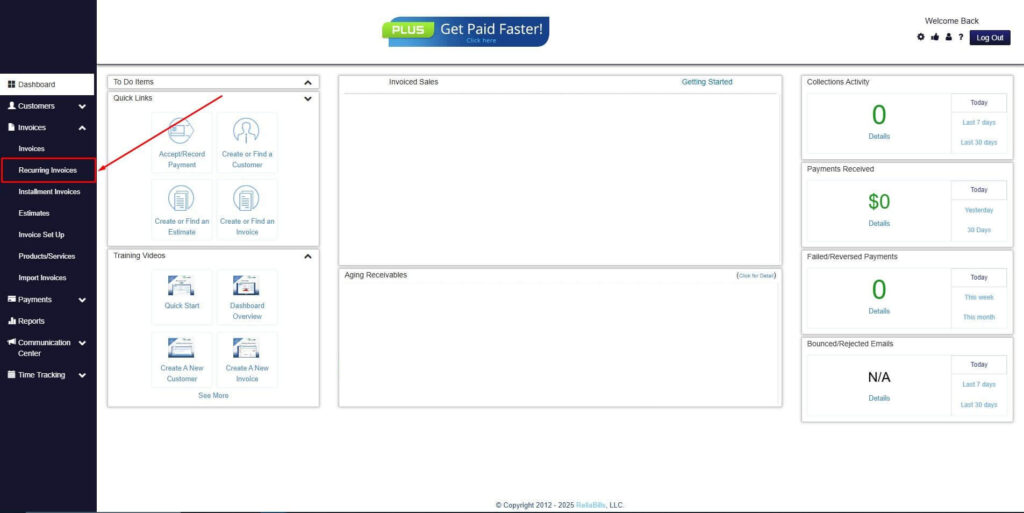
Step 3: Go to the Customers Tab
- If you have already created a customer, search for them in the Customers tab and make sure their status is “Active”.
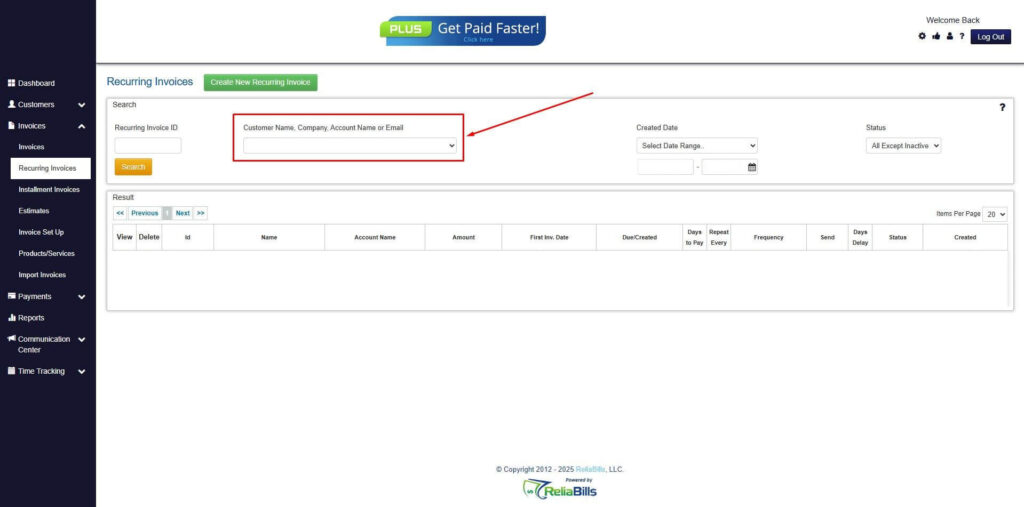
Step 4: Click the Create New Recurring Invoice
- If you haven’t created any customers yet, click the Create New Recurring Invoice to create a new customer.
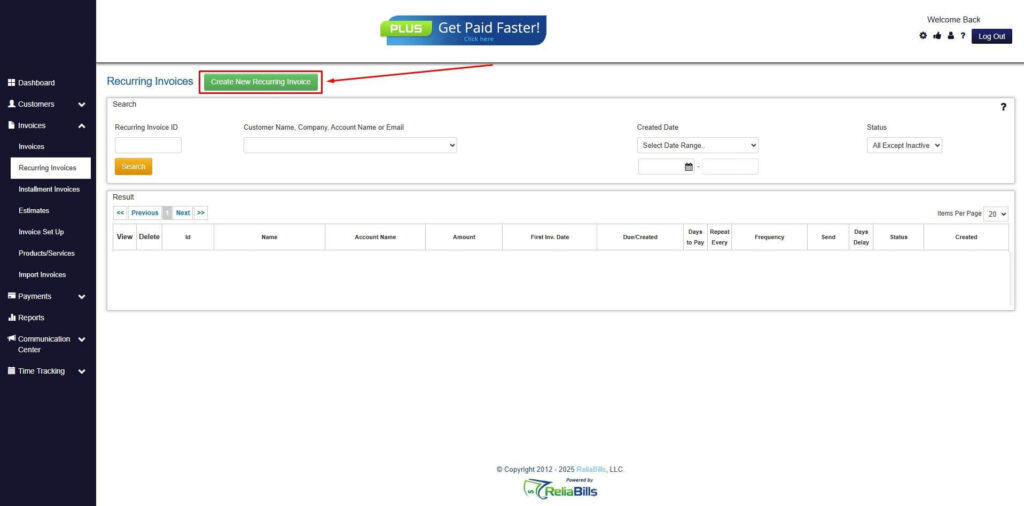
Step 5: Click on the “Click here” Button
- Click on the “Click here” button to proceed with the recurring invoice creation.
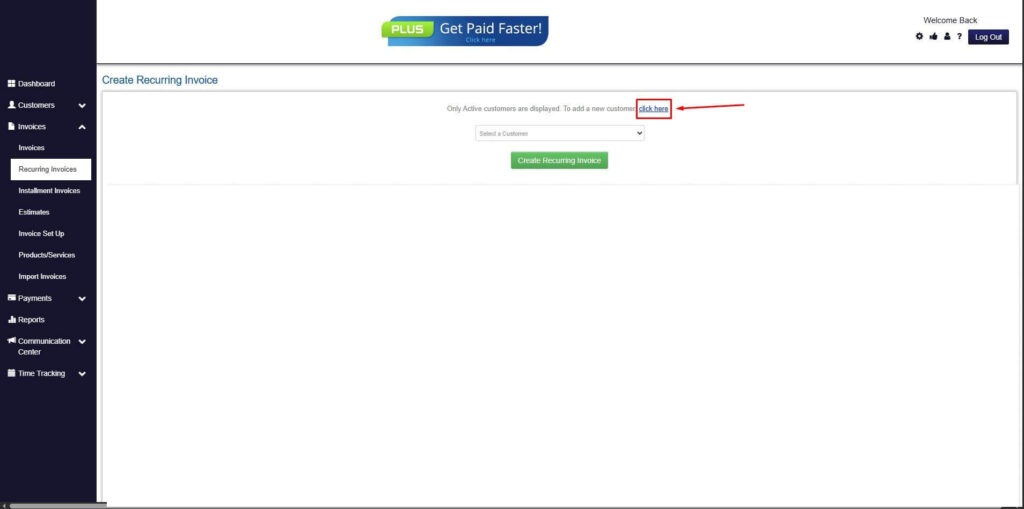
Step 6: Create Customer
- Provide your First Name, Last Name, and Email to proceed.
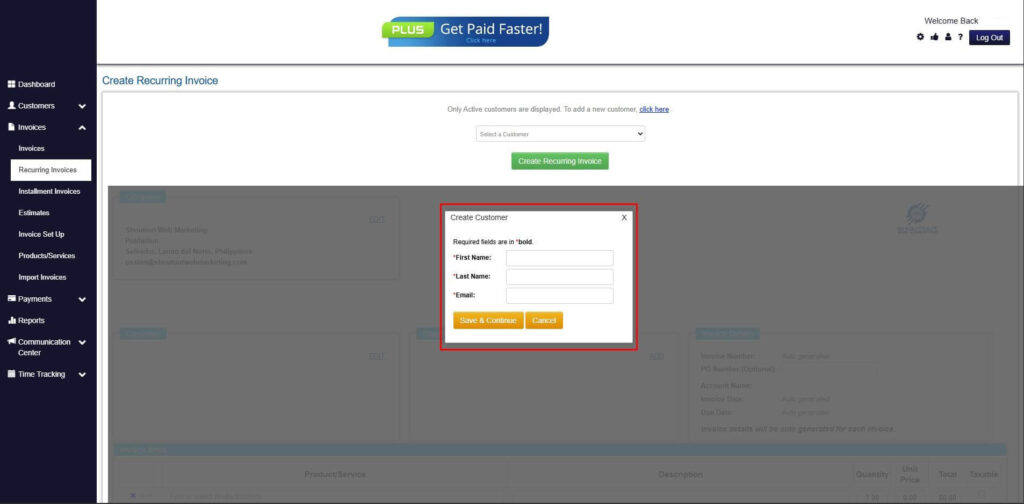
Step 7: Fill in the Create Recurring Invoice Form
- Fill in all the necessary fields.
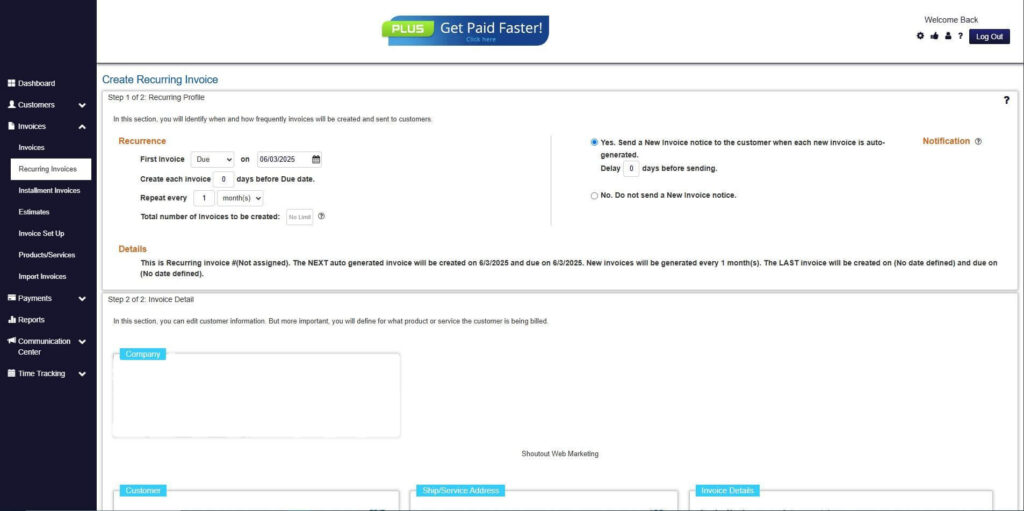
Step 8: Save Recurring Invoice
- After filling up the form, click “Save Recurring Invoice” to continue.
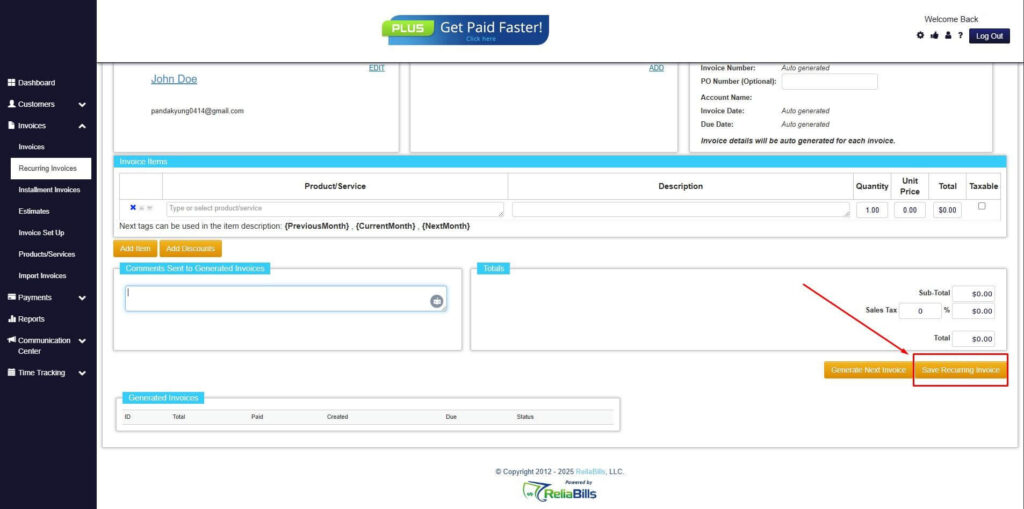
Step 9: Recurring Invoice Created
Your Recurring Invoice has been created.
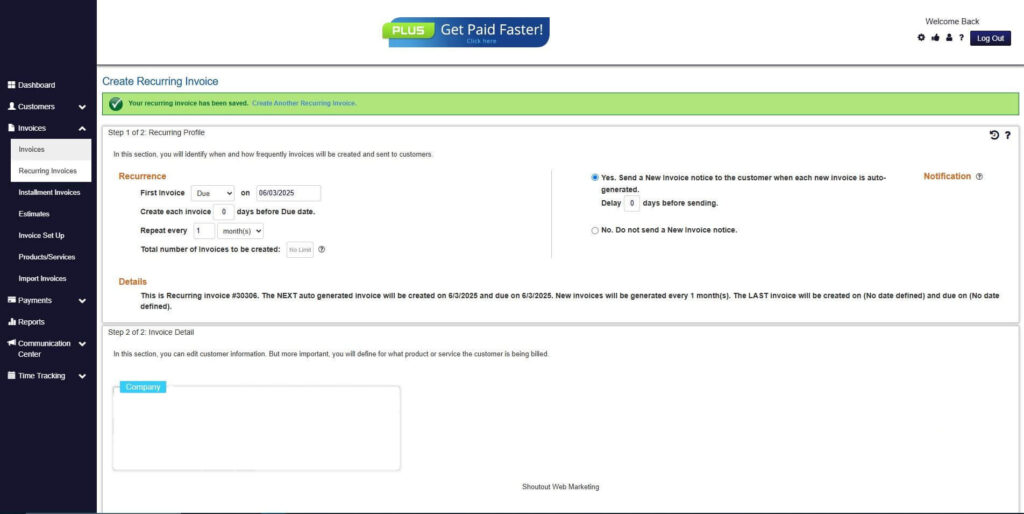
Wrapping Up
Bad debt expense is bad for business. That’s why you should keep it at a minimum by acknowledging that it exists and doing something when you have it. Consider the steps and methods that we’ve discussed, and make sure you avoid bad debt expenses as much as you can.

